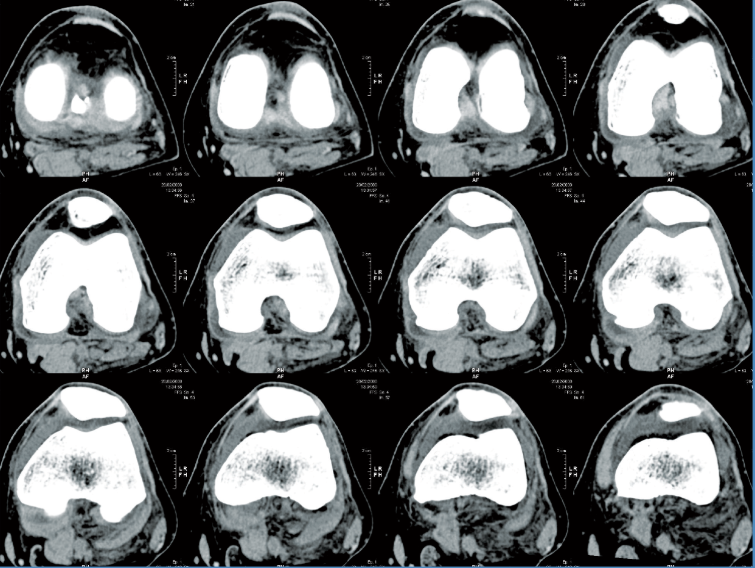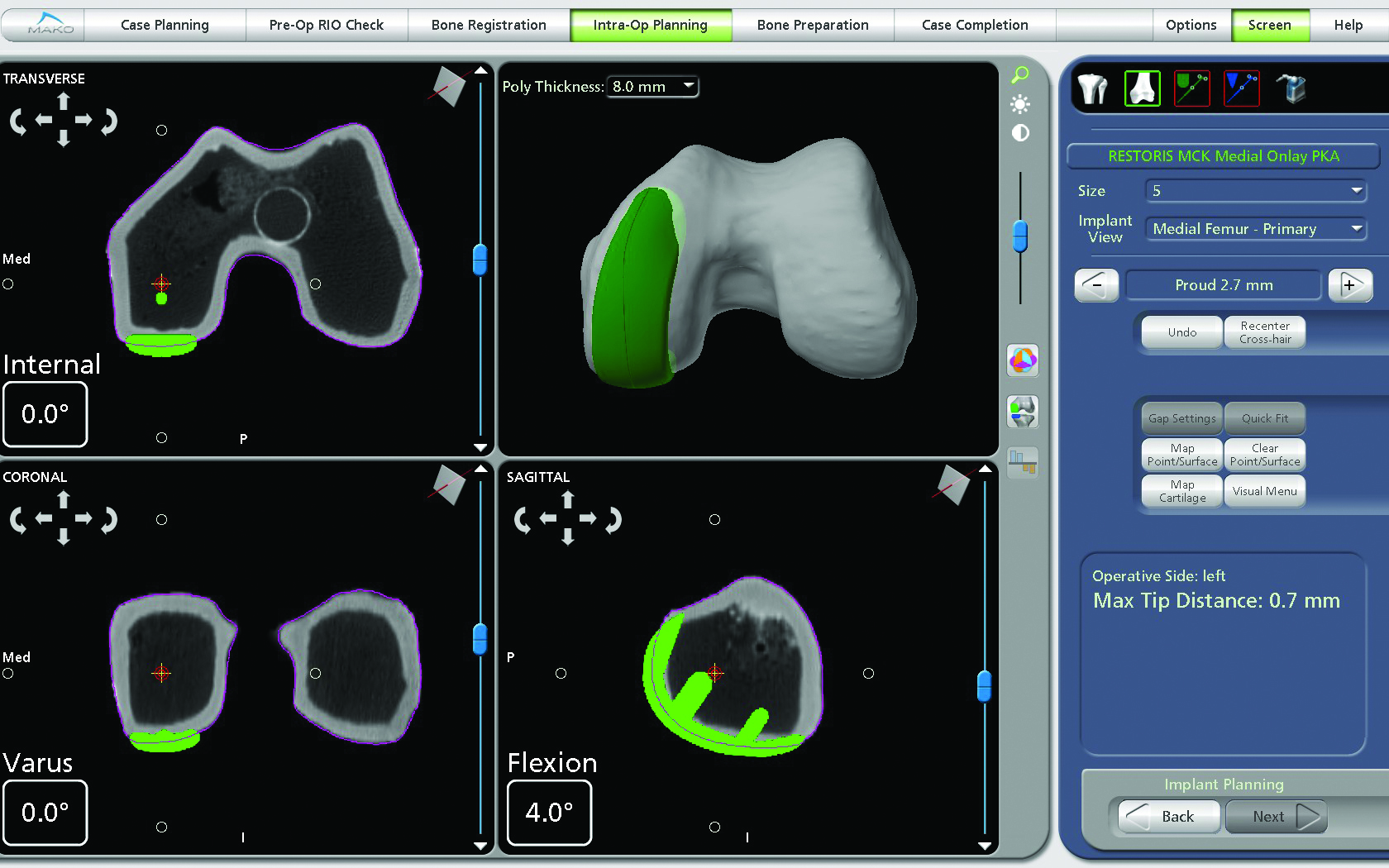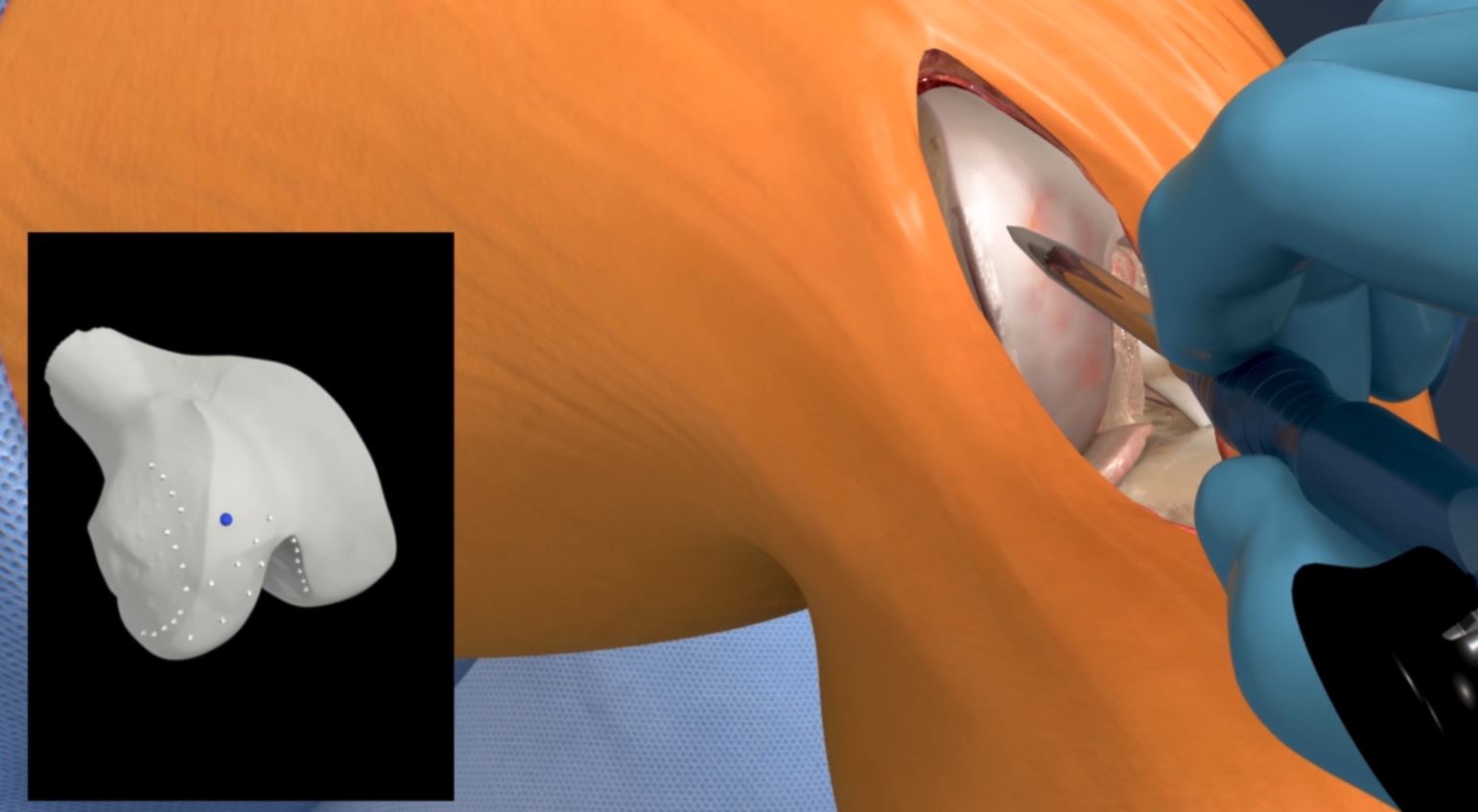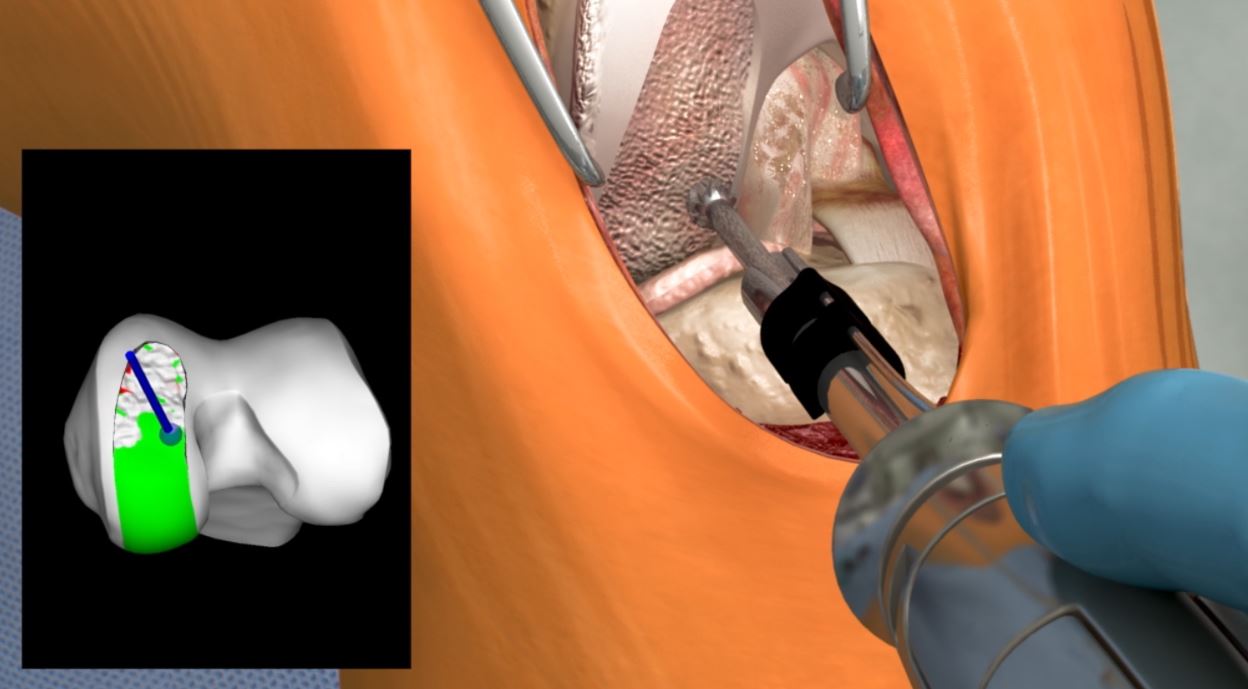How Mako Robotic Arm Assisted Partial Knee Replacement works
A Computer Tomography (CT) scan of your joint is taken and used with a computer to generate a 3D virtual model of your unique anatomy. a CT scan is a series of X-rays taken at different angles, that can help surgeons see things that they can’t typically see with an X-ray alone.

This virtual model is loaded into the Mako System software and is used to create your personalised pre-operative plan. Before surgery, the surgeon reviews the planned size and placement of the implant, and, if necessary, the surgeon can modify the preoperative plan.

During surgery the surgeon uses a probe to locate points on the knee in order to register the anatomy in the Mako system. This process establishes the relationship between the patient’s actual anatomy in the operating room and the 3D model that was used during the planning process. This step helps ensure the procedure is executed to plan. Once the anatomy is registered to the 3D model, the surgeon has the flexibility to modify the pre-operative plan during surgery, based on their assessment of the patient’s anatomy and range of motion.

During the operation, your surgeon will use the Mako system to assist in performing your surgery. The Mako System also allows your surgeon to make adjustments to your plan during surgery as needed. When the bone is being prepared for the implant, your surgeon is the one performing the surgery, the Mako System simply guides them within the pre-defined area and helps to keep bone removal within the the planned boundaries.

With the diseased bone gone, a partial knee implant is inserted into the joint space, and once the surgeon is comfortable with the knee’s movement, it’s off to the recovery room to begin the journey.
For more information on what to expect before, during and after surgery, see Preparing for surgery.
1. “What is arthritis”, Arthritis Australia website (https://arthritisaustralia.com.au/wordpress/wp-content/uploads/2018/02/ArthAus_WhatisArthritis_1805.pdf) accessed January 2019.
